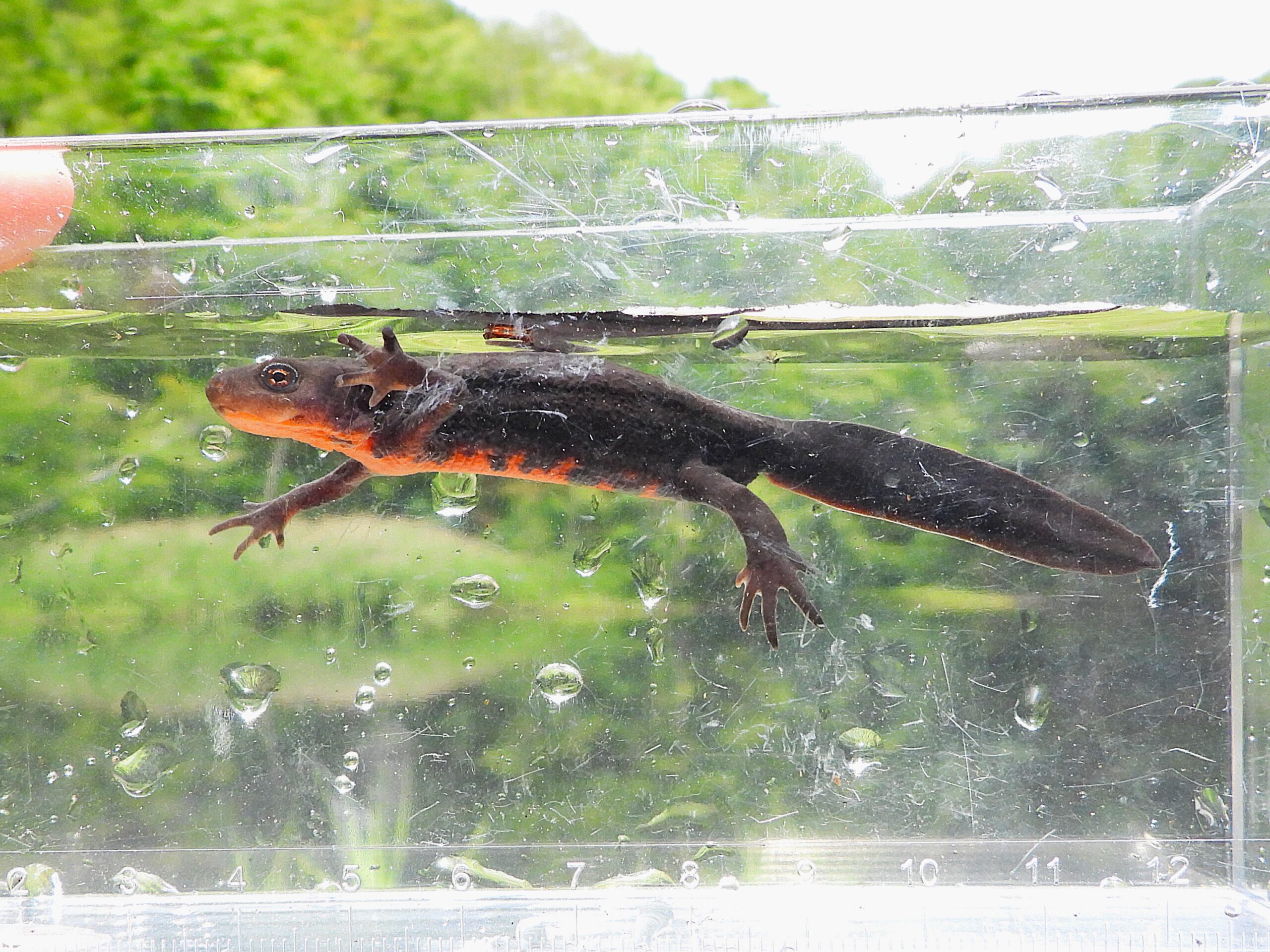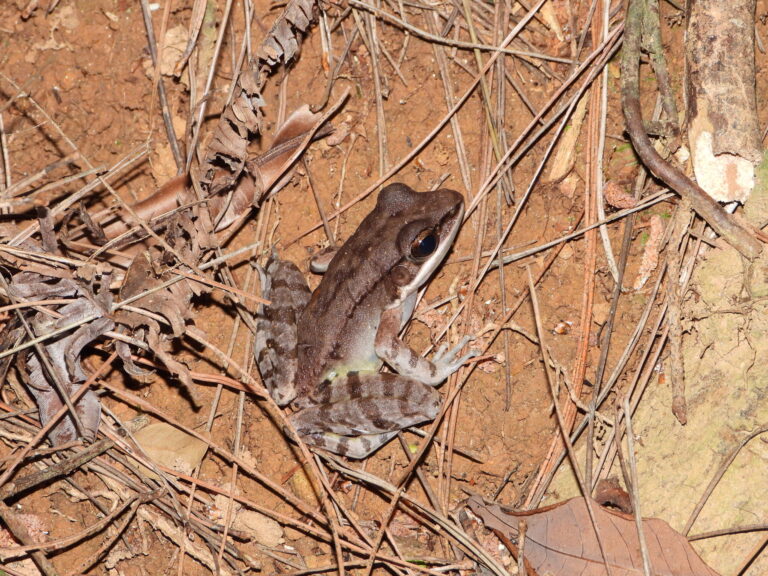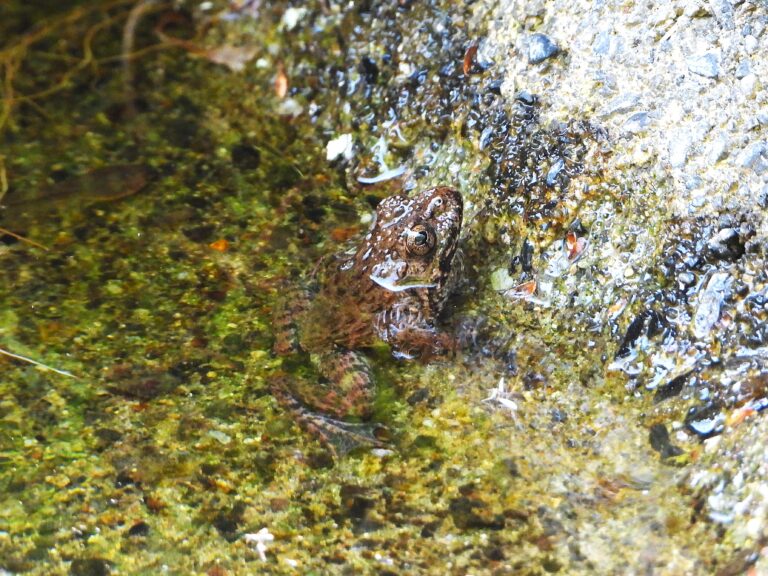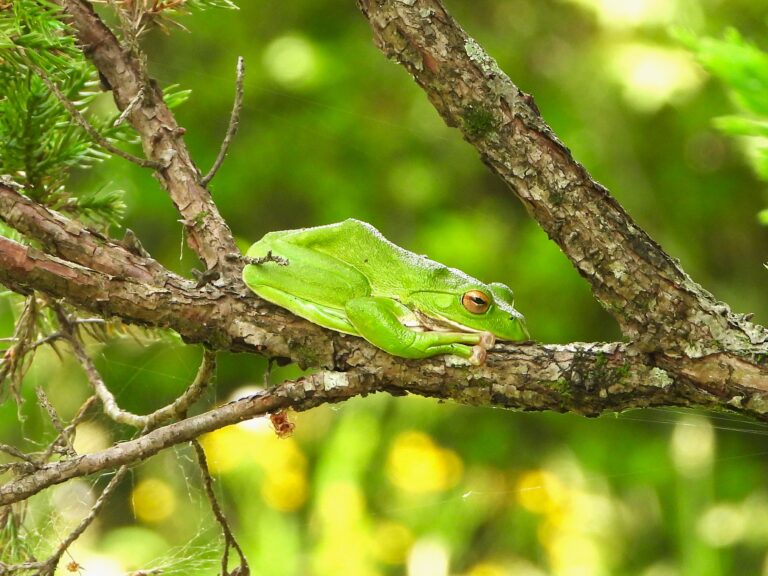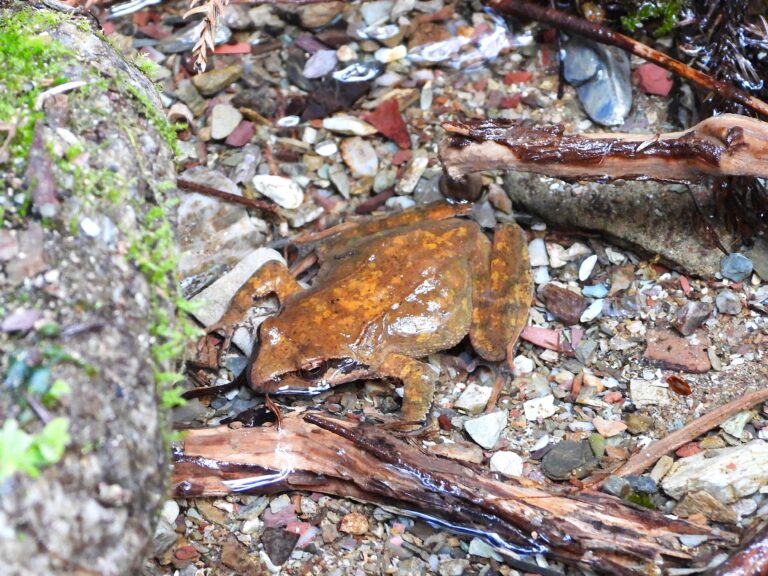Japanese Fire-bellied Newt (Cynops pyrrhogaster) – Wildlife of Japan
Introduction
The Japanese fire-bellied newt is a small, vividly colored amphibian native to Japan’s lowlands and foothills. Its bright orange-red belly and remarkable regenerative ability make it both a beloved natural symbol and a well-studied species in biology. However, loss of habitat and overcollection have led to its classification as Near Threatened in Japan and globally.
Appearance
Adults measure 8–15 cm in total length. The back is dark brown to black, while the belly glows orange to scarlet with irregular dark blotches. Their skin contains granular glands that secrete tetrodotoxin (TTX)—a potent neurotoxin also found in pufferfish—used as a defense against predators.
Habitat & Distribution
This species is endemic to Honshu, Shikoku, and Kyushu. It prefers ponds, ditches, small lakes, paddy fields, and quiet stretches of streams with cool, clean water and rich aquatic vegetation. After metamorphosis, juveniles sometimes live temporarily on land under stones and leaf litter, but most remain close to water.
Behavior
Outside the breeding season, adults are mostly aquatic and often rest under stones or aquatic plants. When threatened, they perform the “unken reflex,” arching the body to display the bright belly as a warning. They are mainly nocturnal and rarely stray far from their home ponds.
Diet
They feed on aquatic invertebrates such as insect larvae, worms, and small crustaceans, occasionally preying on tadpoles or eggs. After metamorphosis, juveniles feed on small soil-dwelling animals like springtails and mites near the water’s edge.
Reproduction
Breeding takes place between April and June. Males perform courtship displays using tail-fanning and pheromones, including sodefrin, the first peptide pheromone discovered in vertebrates. Females lay eggs singly, wrapping each in plant leaves. The larvae hatch in about three weeks and metamorphose after three to six months.
Conservation
The Japanese fire-bellied newt is listed as Near Threatened by both the IUCN and Japan’s Ministry of the Environment. Populations are declining due to habitat destruction, water pollution, and past overcollection. Emerging amphibian diseases, such as chytrid fungus (Bsal), pose an additional threat. Conservation efforts focus on wetland protection and preventing disease spread through field hygiene.
Author’s Impression
In Japan, the fire-bellied newt has long been regarded as a guardian spirit of rice paddies and a familiar companion in rural life. Its calm nature and long lifespan make it a beloved pet even today, quietly connecting people with the nature around them. Each individual has unique belly patterns, making every newt distinct and beautifully personal.

